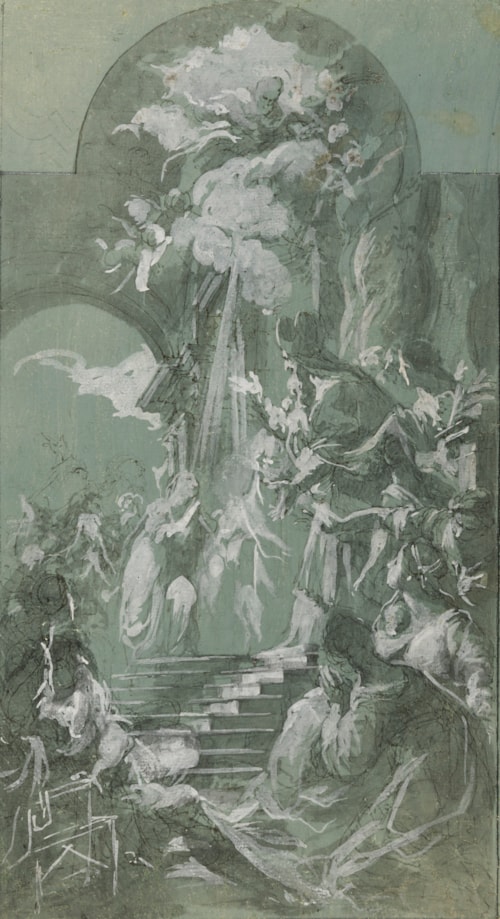
Carlo Alberto BARATTA
Genoa 1754 - Genoa 1815
Biography
One of the last exponents of the great Genoese Baroque tradition, Carlo Alberto Baratta was active as a fresco painter and stage designer, and was also a prolific and gifted draughtsman and engraver. Born into a wealthy Genoese family, he was initially self-taught as an artist but completed his studies at the Accademia Ligustica di Belle Arti in Genoa. There he copied the prints and drawings of an earlier generation of Genoese artists, and by 1771 had won three prizes at the Scuola del Disegno. (Baratta also received training as a printmaker with the architect Emanuele Andrea Tagliafichi.) His early career was as a scenographer, working in collaboration with his brother Antonio, and together they created set designs for the Teatro di Sant’Agostino in Genoa, as well as for the private theatre of the Villa Brignole Sale at Voltri. The noble Genoese Brignole Sale family were among the artist’s first important patrons.
Much of Baratta’s finest work as a painter can be dated to the 1780s and 1790s. These include a fresco, now destroyed, of The Triumph of Columbus with Allegories of the Arts and Sciences, painted in 1785 for the ceiling of a room in the Palazzo Brignole Sale, now the Palazzo Rosso. Also lost is a ceiling fresco on the vault of a chapel in the now-destroyed Genoese church of Santa Maria della Pace, executed around 1796, which was much praised by the 19th century Genoese biographer and art historian Federigo Alizeri. Other significant works by Baratta include a Presentation of the Virgin in Santa Maria Assunta in Camogli and an Education of the Virgin in the Capuchin monastery in Voltaggio, while he also completed some paintings begun by the artist Giovanni David in the Genoese church of Santa Maria del Carmine. Between 1804 and 1805 he decorated the choir of the Duomo at Chiavari, a work notable for its vibrant colour that is generally regarded as his masterpiece. Unlike some of his contemporaries, Baratta does not seem to have travelled outside Liguria, and spent his entire career in Genoa. His work represents the final flourish of the local Baroque tradition that was first established in the late 16th century. As the late scholar Mary Newcome Schleier has written, ‘The slashing brushstrokes, high contrasts of light, and dramatic naturalism of Baratta…brought a sputtering close to the dark manner that had begun the whole Genoese baroque movement.’
The same writer has further noted that, ‘Of the Genoese artists working in Liguria at the end of the 18th century, Carlo Alberto Baratta was the most prolific draftsman and perhaps the most versatile.’ Baratta was particularly well known for his pen drawings, which are usually finished compositions on coloured paper that display a liberal application of white heightening. As Federigo Alizeri noted of the artist, ‘The drawings of Baratta are mostly shaded with bistre and heightened with white on a blue background, with strong chiaroscuro effects and a determined touch that obviate any desire for the colours or diligence of paintings in oil.’ Alizeri adds that several drawings by Baratta were in the collections of the Genoese collectors Santo Varni and the Marchese Durazzo; those of the latter are now in the print room of the Palazzo Rosso in Genoa. Other drawings by the artist are today in museums in Florence, London, New York, Weimar and Worms, as well as in several private collections.


